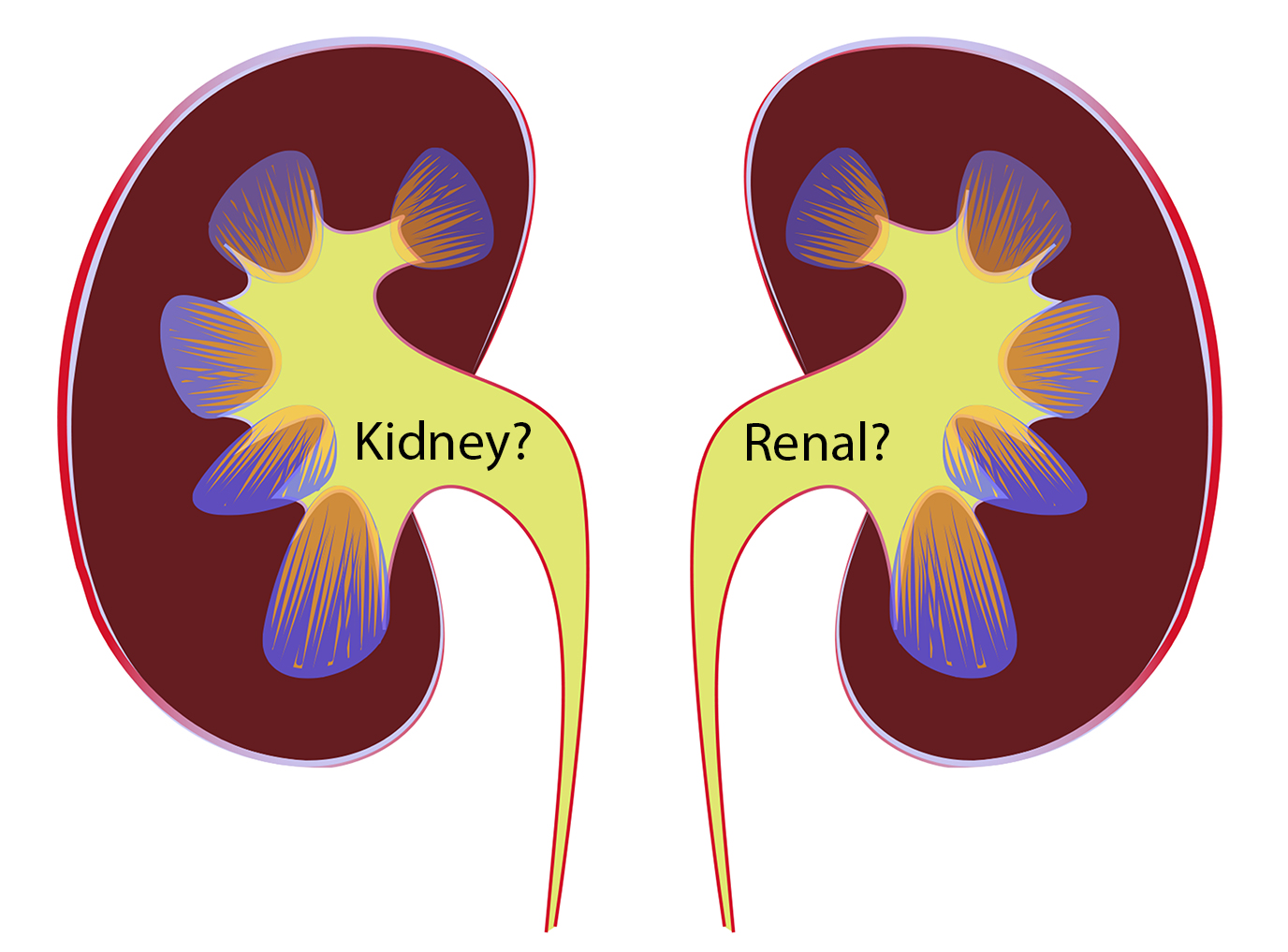 In some instances in our work with scientific topics, there is the term to use, one that conveys clarity, consistency, and scientific accuracy; one that seems to have achieved consensus. Such terms might describe a disease or condition (COVID-19), a procedure or treatment (appendectomy), a specific entity (left ventricle), or an observed object or phenomenon (atom, molecule), among many others.
In some instances in our work with scientific topics, there is the term to use, one that conveys clarity, consistency, and scientific accuracy; one that seems to have achieved consensus. Such terms might describe a disease or condition (COVID-19), a procedure or treatment (appendectomy), a specific entity (left ventricle), or an observed object or phenomenon (atom, molecule), among many others.
In other instances, however, the term used depends on both speaker (writer) and audience. Do you talk about hypertension or high blood pressure? Myopia or nearsightedness? Myocardial infarction or heart attack? Chronic renal failure or chronic kidney disease?
The second example in each of the aforementioned pairs is better aligned with language appropriate for patient communication. Except what about that last one: chronic renal failure and chronic kidney disease? What’s the difference?
Seeking Consensus on Nomenclature
I was fortunate to be invited to participate in a global initiative organized by KDIGO (Kidney Disease: Improving Global Outcomes). A number of people involved in nephrology research and journal publication gathered in Amsterdam (yes, prepandemic) as part of a consensus conference on nomenclature for kidney function and disease. Our charge was to come up with a standardized approach to kidney-related terminology for scientific publication and develop a glossary that could be used in medical communication.
Why was this meeting necessary? Because the nomenclature for describing kidney function and disease has not always been consistent or clear. Some years ago, a survey of hundreds of journal articles and meeting abstracts reported a broad array of overlapping or confusing terms for chronic kidney disease (CKD). Those authors advocated adoption of clearer terminology.1 Yet, terms pointed out in that analysis as problematic, such as “chronic renal failure” and “predialysis,” are still in use.
The terms used to describe bodily function and disease should be understandable to all parties. The AMA Manual of Style encourages use of patient-centered language,2 and this was a guiding principle for the development of a kidney-themed glossary, including the general description of acute and chronic kidney disease and kidney measures.
Findings and Recommendations
As described in detail in the published report,3 conference attendees reached general consensus on a collection of terms and recommended their use in English-language scientific journals.
- Use “kidney” rather than “renal” or “nephro-” when referring to kidney disease and kidney function (but not necessarily for anatomical or structural terms, such as renal cell carcinoma or renal cortex)
- Use “kidney failure” or “kidney disease” with appropriate descriptions of symptoms, signs, and treatment rather than “end-stage renal disease” (Note: end-stage renal disease is still used when referring to eligibility for medical care under U.S. legislation or other regulations)
- Use established classification of acute kidney diseases and disorders as well as chronic kidney disease
- Use specific kidney measures, such as albuminuria or decreased glomerular filtration rate, rather than “abnormal” or “reduced” kidney function to describe alterations in kidney structure and function.
The full 13-page report3 from the conference details much more, including terminology applicable to journals that focus on kidney disease, as well as terms useful to general medical journals, researchers, clinicians, and patient advocates.
The glossary, which is freely available on the KDIGO website,4 outlines preferred terms, abbreviations, descriptions, and terms to avoid. It is noted that journals may choose which of the recommendations to implement, and that style among journals will vary to be consistent with nomenclature for other diseases.3
The glossary and full report are an important starting point, but like all nomenclature, the recommendations will require future expansion and updating. The findings from this conference, and the glossary in particular, will be used to inform an update to kidney disease nomenclature in the AMA Manual of Style.5
Conclusions and Takeaways
Although the recommendations are not likely to answer all concerns, the consensus among conference attendees was that standardizing scientific nomenclature is a necessary first step to improving communication among clinicians, researchers, and public health officials, as well as among patients, their families and caregivers, and the public.
As scientific communicators, we need to use the most precise, consistent, and appropriate words to convey research, clinical findings, opinions, news, and a wide variety of other content to individuals across the globe. Added to those aims, it is imperative that we use terms that emphasize respect and clarity in the language used to discuss human beings.
References and Links
- Hsu CY, Chertow GM. Chronic renal confusion: insufficiency, failure, dysfunction, or disease. Am J Kidney Dis. 2000;36:415–418. https://doi.org/10.1053/ajkd.2000.8996.
- Frey T, Young RK. Inclusive language. In: Christiansen S, Iverson C, Flanagin A, et al. AMA Manual of Style: A Guide for Authors and Editors. 11th ed. Oxford, UK: Oxford University Press; 2020. [accessed February 3, 2022]. https://www.amamanualofstyle.com/view/10.1093/jama/9780190246556.001.0001/med-9780190246556-chapter-11-div2-26.
- Levey AS, Eckardt K-U, Dorman NM, et al. Nomenclature for kidney function and disease: report of a Kidney Disease: Improving Global Outcomes (KDIGO) Consensus Conference. Kidney Int. 2020;97:1117–1129. https://doi.org/10.1016/j.kint.2020.02.010.
- Consensus Conference on Nomenclature for Kidney Function & Disease. KDIGO. [accessed February 3, 2022]. https://kdigo.org/conferences/nomenclature/.
- Terminology in transition: nephrology. In: Christiansen S, Iverson C, Flanagin A, et al. AMA Manual of Style: A Guide for Authors and Editors. 11th ed. Oxford, UK: Oxford University Press; 2020. [accessed February 12, 2022]. https://www.amamanualofstyle.com/view/10.1093/jama/9780190246556.001.0001/med-9780190246556-chapter-14-div1-25.
Stacy L Christiansen, MA, is Managing Editor, JAMA, and Chair, AMA Manual of Style.
Opinions expressed are those of the authors and do not necessarily reflect the opinions or policies of their employers, the Council of Science Editors or the Editorial Board of Science Editor.
